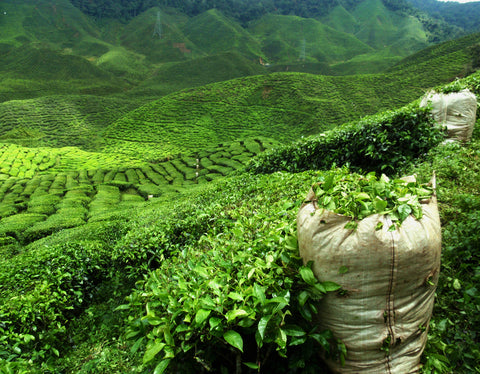What is matcha tea
Matcha tea is made from the leaves of the Camellia sinesis tea plant. The peculiarity of matcha is the origin and production method of this green tea. Unlike many other teas, this green tea is ground into a powder before being consumed.
 The quality of matcha tea is largely determined by the way the tea leaves are treated. Only a small number of tea farmers are able to produce and supply high-quality matcha.
The quality of matcha tea is largely determined by the way the tea leaves are treated. Only a small number of tea farmers are able to produce and supply high-quality matcha.
Only the highest quality, young leaves are used in the production of matcha tea . A month before harvesting the leaves, the plants are placed in the shade, so that they produce more chlorophyll, amino acids, antioxidants and L-Theanine. These extra substances provide the intense green color, taste, smell and nutrients. Growing matcha is therefore an intensive and long process.
History of matcha
The history of matcha tea goes back to 1191, when this tea was introduced to Japan by the Zen Buddhist Eisai, who brought the tea with him from China. He was also the first to drink the tea in ground powder form. Over the centuries, matcha has become strongly intertwined with Japanese culture and tea ceremonies have even emerged around it. During this ceremony, hot water and matcha are beaten together with a bamboo tea beater, creating a foamy tea with a full flavor. Boiling water should be avoided, as it makes the matcha bitter.
Benefits of matcha tea
Matcha contains more antioxidants than regular tea, has an anti-inflammatory effect and gives the body a boost. Furthermore, the chlorophyll ensures that harmful metals are removed from the body. Finally, L-Theanine provides a calming effect. In recent years, matcha tea has become increasingly popular and more and more positive properties are attributed to this tea. For example, matcha would also have a beneficial effect on the prevention of dementia and promote mental health in general.


